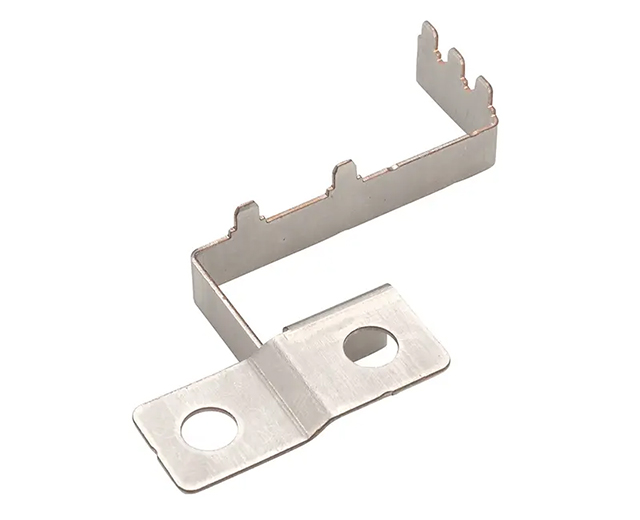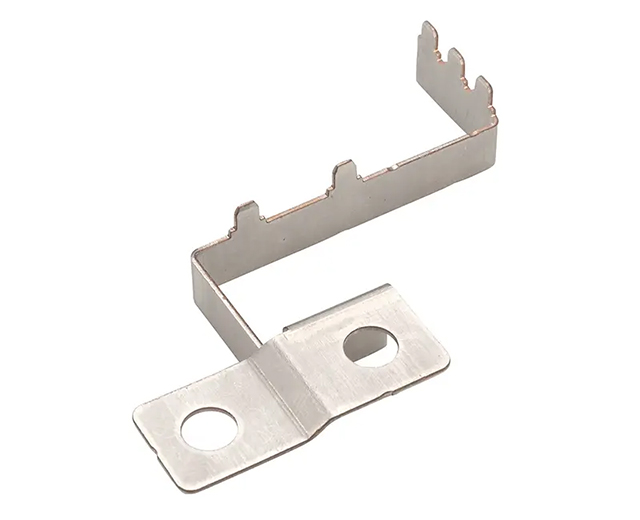

A tin plated copper bar is a high-conductivity copper conductor coated with a thin layer of tin, designed for applications requiring corrosion resistance, excellent electrical performance, and long-term durability. Widely used as a tinned copper busbar, tin coated copper busbar, or copper tinned busbar, these bars are ideal for power distribution systems, EV battery packs, switchgear, and grounding solutions. They are also used as tin plated copper ground bars to provide safe and reliable grounding in industrial, telecom, and renewable energy installations.

1. Excellent Electrical Conductivity
Made from 99.9% pure copper, the tinned copper flat bar maintains high conductivity (≥99.9% IACS), ensuring low-resistance connections and efficient current flow in tin plated Copper Bus Bar and busbar tinned copper applications.
2. Superior Corrosion Resistance
The tin coating prevents oxidation and galvanic corrosion, providing long-term reliability even in harsh environments. Salt spray resistance exceeds 500 hours (ASTM B117), making copper tinned busbars highly durable.
3. Outstanding Solderability
Quick wetting (under 1 second using Sn63Pb37 solder at 250°C) allows easy soldering for battery interconnects, PCB grounding, and high-reliability connectors.
4. Thermal Stability & Conductivity
Operates between -50°C and +150°C with thermal conductivity of 380–400 W/(m·K), suitable for tin coated copper busbar applications in EVs, telecom systems, and renewable energy.
5. Stable Mechanical Properties
Tensile strength of 200–300 MPa ensures durability while allowing flexible forming, punching, or machining for custom tinned copper busbar and tin plated Copper Bus Bar configurations.
6. Low Contact Resistance
Maintains 0.1–0.5 mΩ·cm² under typical installation pressure, reducing energy loss in high-current networks.
Material Selection: High-purity copper (C1100 / OFC) for maximum conductivity
Cutting & Shaping: CNC machining, stamping, or laser cutting for precision tinned copper flat bars
Tin Plating: Electroplating or hot-dip tin for corrosion resistance and enhanced solderability
Optional Insulation Coating: PVC or heat-shrink for additional electrical protection
Quality Testing: Conductivity, thermal resistance, and mechanical durability tests to ensure reliable performance
| Item | Details |
|---|---|
| Base Material | Pure Copper (T2 / C11000 / OFC) |
| Plating Type | Tin Plated (Bright or Matte Finish) |
| Plating Method | Hot-Dip / Electroplating |
| Tin Layer Thickness | 5μm / 10μm / 15μm / 20μm (customizable) |
| Cross-Section Shape | Flat Bar / Rectangular / Square (custom shapes available) |
| Width Range | 5mm – 120mm |
| Thickness Range | 1mm – 30mm |
| Length | 1m / 2m / 3m or customized |
| Surface Resistivity | ≤ 2.5 μΩ·cm |
| Contact Resistance | < 0.2 mΩ |
| Conductivity | ≥ 99.9% IACS |
| Operating Temperature | -40°C to +120°C |
| Current Carrying Capacity | Up to 3000A (based on size & design) |
| Compliance | RoHS / REACH / UL / ISO |
| Applications | Electrical panels, switchgear, EV battery packs, grounding, power distribution systems |
Power Distribution Systems: Switchboards, electrical panels, and low-voltage cabinets. Tin plated Copper Bus Bars reduce oxidation-related resistance and ensure reliable conductivity.
Electric Vehicles & Battery Systems: Battery interconnects, high-voltage wiring, and module connections. Provides low-resistance connections with excellent thermal and vibration performance.
Grounding Applications: Tin plated copper ground bars provide stable grounding in industrial, telecom, and renewable energy installations.
Renewable Energy & Telecom: Solar inverter cabinets, combiner boxes, wind turbines, and RF racks. Maintains >95% initial conductivity even after decades of outdoor exposure.
Industrial Automation & Control Panels: PLC cabinets, relay systems, and control panels. Tin coating protects against sulfuric, humid, and corrosive atmospheres.
| Comparison | Advantage |
|---|---|
| vs. Bare Copper | 10x better corrosion resistance in humid/salt environments |
| vs. Silver Plated | 30% more cost-effective with similar durability |
| vs. Nickel Plated | Lower contact resistance and better soldering performance |
Store at 15–30°C, 40–60% RH; use VCI paper for long-term protection
Clean light oxidation with 5% citric acid; heavy soiling with pH 6–8 tin-safe cleaners
Apply anti-oxidation coating annually for high-current joints
Retorque connections after thermal cycles and monitor joints using 4-wire Kelvin testing
Custom sizes, shapes, and plating thicknesses
Surface finish options: Bright Tin / Matte Tin
Plating methods: Electroplated or Hot-Dipped
RoHS & REACH compliant
Full OEM/ODM support with fast delivery
Reliable busbar tinned copper, copper tinned busbar, tin coated copper busbar, tinned copper flat bar, tin plated copper ground bar, tinned copper busbar, and tin plated copper bus bar performance for modern electrical, EV, and industrial applications
Q1: What is a tin plated copper bar used for?
A: Power distribution, battery interconnects, grounding, EV battery modules, and industrial electrical systems.
Q2: Why plate copper with tin?
A: To prevent oxidation and corrosion, enhance solderability, and ensure long-term conductivity in harsh environments.
Q3: Can these bars be customized?
A: Yes, dimensions, hole patterns, slots, and bent shapes are available based on specifications.
Q4: Difference between electroplated and hot-dip tin coating?
A: Electroplated is thinner and smoother; hot-dip is thicker and suited for high-current or outdoor use.
Q5: Are certifications available?
A: Yes, our bars comply with RoHS, REACH, UL, and ISO standards.